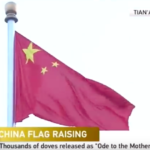Dragon Tales
Academics conclude that China is not quite the threat it has been presumed to be, though hardly benign. Boston College political scientist Robert Ross reminded a Capitol Hill audience recently that China surpassed the United States as the number one trading partner of both Taiwan and South Korea in 2001.
Georgetown professor Robert Sutter, in that same meeting, pointed out that, nonetheless, half of China’s goods were “processed,” meaning that the materials used to make them came from elsewhere. Still, Ross cautioned the audience, “The rise of China as an economic power does not translate into strategic power.
Yet Ross admits that China has 1,500 missiles pointed at Taiwan. “They can hit a satellite with a missile,” Ross said at the January 26, 2010 Foreign Policy Research Institute (FPRI) conference, and “They can build subs” but:
- “They can’t make engines or airplanes”; and
- “They can’t make robots.”
Moreover, Ross observed at the meeting at the Reserve Officers Association, the U. S. has 11 aircraft carriers, China has none. Yet and still, “In 2003, South Korea refused to let the U. S. use it as a base,” Ross told the FPRI gathering. “We have no U. S. bases there since.”
“Our forces are down 40 percent since the Cold War and they are not going up.” Unfortunately, U. S. military commitments are trending in the opposite direction.
A Congressional Research Service (CRS) study from 2004 shows that the United States has engaged in more military interventions since the Cold War ended in 1989 than it did in the previous four decades. Most of the actions, be it noted, took place before the September 11, 2001 attacks upon America.
Malcolm A. Kline is the Executive Director of Accuracy in Academia.




